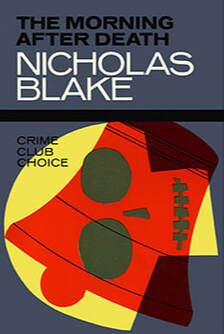
The Massachusetts college setting is also enjoyable, and although Nigel (and his creator, poet Cecil Day-Lewis) is quite at home among the halls of academe, the trip across the pond is a productive one. In part, this is due to the cultural differences between the English detective and the American academics he interacts with. For example, he must remind himself to check for traffic coming from the left and contrasts his own college days with those of the largely joyless students surrounding him:
Policemen stood talking together at each of the two gates that came within Nigel’s vision. Students, released to their normal tasks, brushed past them, carrying their books in canvas bags. They look so young, thought Nigel: can I ever have been as young as that? There is a firm intention in their walk – they neither saunter nor run, as we used to do, enjoying our brief spell of freedom between school and job: they are already seriously committed to the future.
But back to that mention of misguided psychology: along with The Worm of Death (1961), this title presents relationships between men and women that are often uncomfortable and chauvinistically facile. Easily the most ill-served is the character of Susannah "Sukie" Tate. (Why the reductive nickname? Answer that, and you can guess where my criticism is going...) Sukie, we are told, was once the target of an attempted rape by one drunken male character, and later, after a discussion about Clare, Nigel’s girlfriend in London, she seduces our intrepid detective, who is all too willing to yield to her charms and vulnerabilities.
It's an odd choice for Blake's detective nearing retirement to get physical with another woman with no guilt or remorse; it is his relationship with Clare Massinger that readers have been following and investing in over the past seven books. But equally troubling is the fact that Sukie is really the only female character of substance in The Morning After Death, and she is both stereotyped and sexualized. There are other women academics introduced, but they are rather interchangeable. For Sukie to be used as both vixen and victim to define the men in the story is troubling, even when one remembers the time (the "liberated" '60's) and place (hedonistic America) in which she appears.

While I don’t want to presume that the detective’s morals and beliefs are completely aligned with the author’s in mouthpiece fashion, I do wonder what the ratio of personal viewpoint and concession to genre expectations might be. That Blake had a consumer readership in mind is rather obvious, so a little sex and vulgarity mixed in to balance (or to make more attractive?) a puzzle’s cerebral aspects is likely intentional. With the same wary caveat of presuming protagonist as author proxy, I end with an early-chapter exchange between Strangeways and a housemaster’s wife on the pitfalls facing both the classic and contemporary mystery writer:
Mrs. Edwardes bent forward and eyed Nigel solemnly. “Considering what I’ve heard of your background,” she said, “tell me, do you read detective fiction?”
“Sometimes,” said Nigel.
“I hope you are sound on it.”
“Sound?” asked Nigel.
“As an art form.”
“It’s not an art form. It’s an entertainment.”
May nodded approvingly. “Excellent. I have no use for those who seek to turn the crime novel into an exercise in morbid psychology. Its chief virtue lies in its consistent flouting of reality: but crime novelists today are trying to write variations on Crime and Punishment without possessing a grain of Dostoevsky’s talent. They’ve lost the courage of their own agreeable fantasies, and want to be accepted as serious writers.” This seemed to annoy her.
[Nigel:] “Still, novels that are all plot – just clever patterns concealing a vacuum – one does get bored with them. I can understand readers getting sick of blood that’s obviously only red ink.”
 RSS Feed
RSS Feed